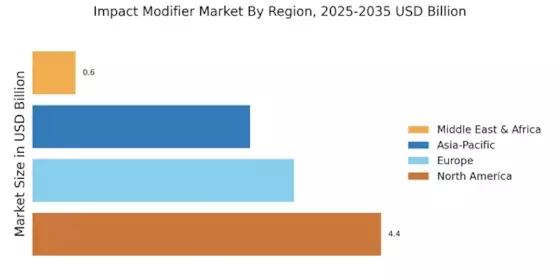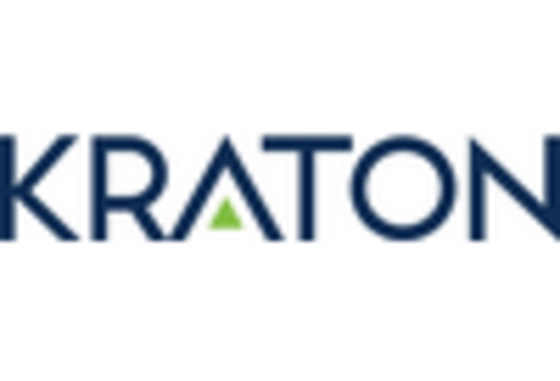Growth in the Automotive Sector
The automotive industry plays a pivotal role in shaping the Impact Modifier Market. With the increasing production of vehicles, there is a corresponding rise in the demand for materials that enhance performance and safety. Impact modifiers are essential in improving the impact resistance of automotive components, thereby ensuring passenger safety and vehicle longevity. The automotive sector is expected to witness a compound annual growth rate of 4.5%, which will likely drive the demand for advanced impact modifiers. As manufacturers strive to meet stringent safety regulations and consumer expectations, the Impact Modifier Market is poised for significant growth, with innovations aimed at enhancing material properties.
Expansion of the Packaging Industry
The packaging industry is undergoing rapid expansion, which is significantly impacting the Impact Modifier Market. With the increasing demand for sustainable and durable packaging solutions, manufacturers are seeking impact modifiers that enhance the performance of packaging materials. The Impact Modifier Market is projected to grow at a rate of 4.8%, driven by the rise in e-commerce and consumer goods. This growth necessitates the use of impact modifiers that improve the strength and durability of packaging materials, ensuring product protection during transit. As companies strive to meet consumer expectations for quality and sustainability, the Impact Modifier Market is likely to see increased investment and innovation in packaging applications.
Rising Demand for Durable Materials
The Impact Modifier Market is experiencing a notable increase in demand for durable materials across various sectors. Industries such as construction, automotive, and packaging are increasingly prioritizing materials that offer enhanced durability and longevity. This trend is driven by the need for products that can withstand harsh environmental conditions and reduce maintenance costs. For instance, the construction sector is projected to grow at a rate of 5.2% annually, leading to a heightened demand for impact modifiers that improve the resilience of materials. As manufacturers seek to meet these evolving requirements, the Impact Modifier Market is likely to see a surge in innovation and product development, catering to the specific needs of these sectors.
Regulatory Compliance and Safety Standards
The Impact Modifier Market is increasingly shaped by stringent regulatory compliance and safety standards across various sectors. Governments and regulatory bodies are implementing more rigorous guidelines to ensure the safety and performance of materials used in construction, automotive, and consumer goods. This regulatory landscape compels manufacturers to adopt impact modifiers that not only enhance product performance but also comply with safety regulations. As a result, the demand for high-quality impact modifiers is expected to rise, driving growth in the market. Companies that prioritize compliance and invest in research to develop compliant products are likely to gain a competitive edge in the Impact Modifier Market.
Technological Innovations in Material Science
Technological advancements in material science are significantly influencing the Impact Modifier Market. Innovations such as nanotechnology and polymer blending are enabling the development of new impact modifiers that offer superior performance characteristics. These advancements allow for the creation of materials that are not only more effective in enhancing impact resistance but also more sustainable. For example, the introduction of bio-based impact modifiers is gaining traction, appealing to environmentally conscious consumers and industries. As research and development continue to evolve, the Impact Modifier Market is likely to benefit from a wave of new products that meet the demands of modern applications.


















Leave a Comment